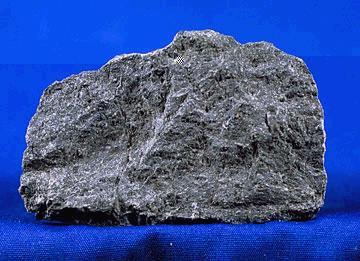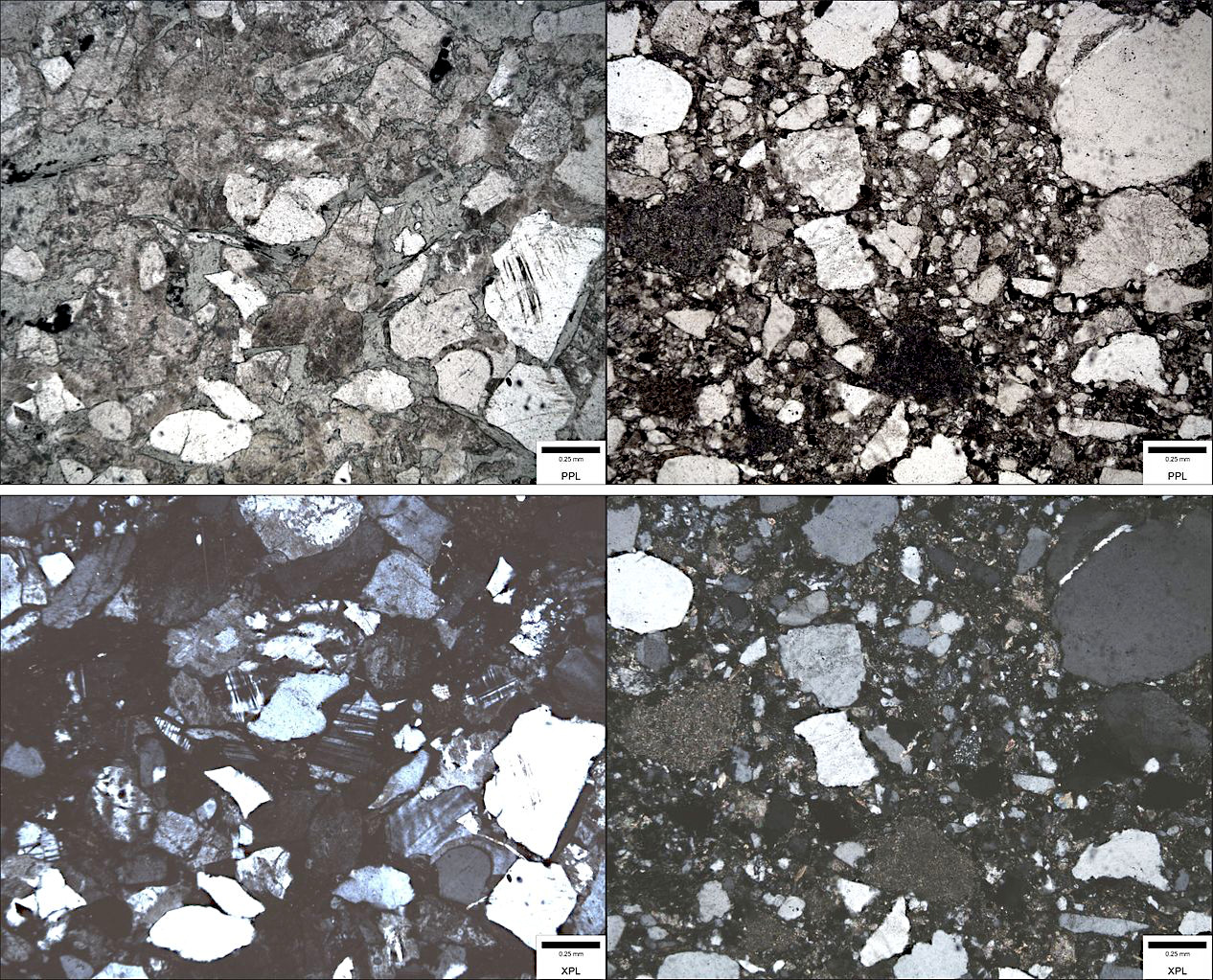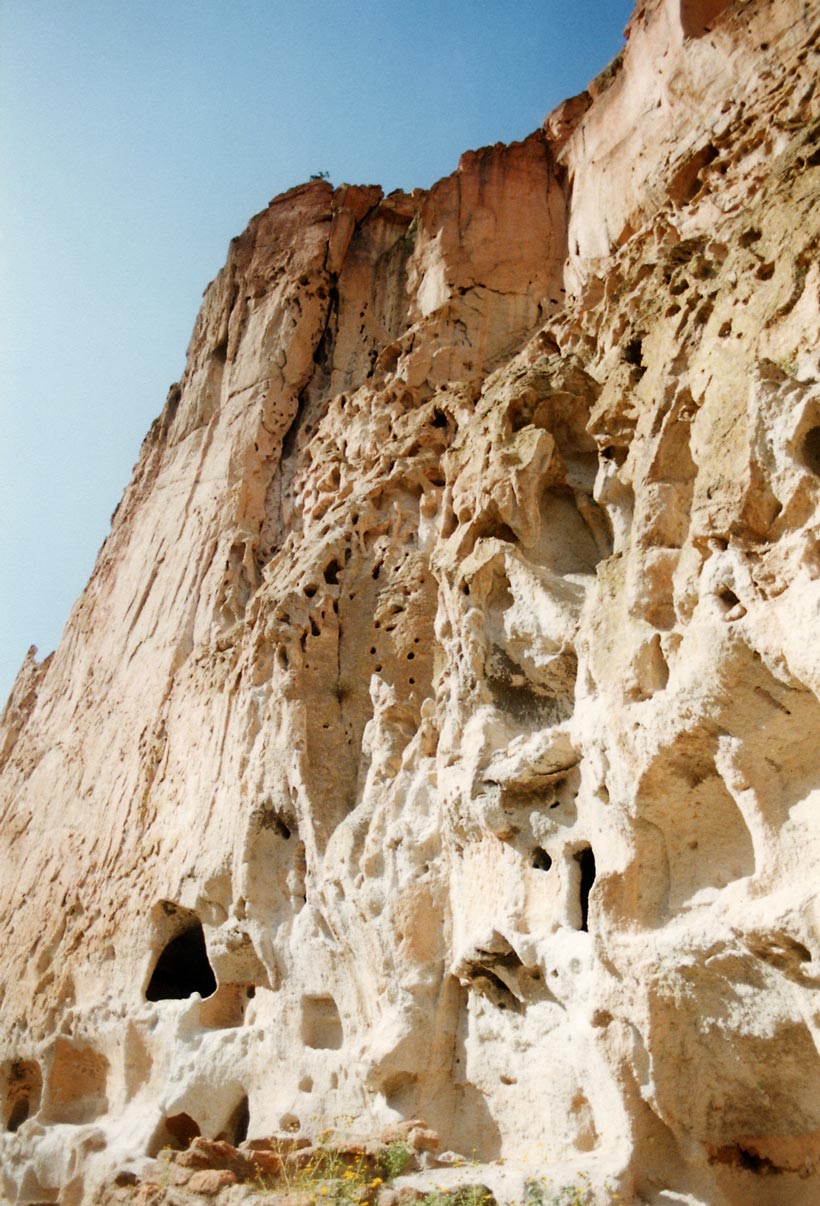|
Geology Of Eswatini
The geology of Eswatini formed beginning 3.6 billion years ago, in the Archean Eon of the Precambrian. Eswatini is the only country entirely underlain by the Kaapvaal craton, one of the oldest pieces of stable continental crust and As such, the country has very ancient granite, gneiss and in some cases sedimentary rocks from the Archean into the Proterozoic, overlain by sedimentary rocks and igneous rocks formed during the last 539 million years of the Phanerozoic as part of the Karoo Supergroup. Intensive weathering has created thick zones of saprolite and heavily weathered soils. Stratigraphy and geologic history Eswatini is built on 3.6 to 2.5 billion year old Archean continental crust that forms the Kaapvaal craton spanning into South Africa, northern Lesotho, western Mozambique, Botswana and southern Zimbabwe. The Precambrian rocks of Eswatini from this period are primarily gneiss and granite, formed between 3.4 and 2.6 billion years ago, based on rubidium-strontium datin ... [...More Info...] [...Related Items...] OR: [Wikipedia] [Google] [Baidu] |
Mafic
A mafic mineral or rock is a silicate mineral or igneous rock rich in magnesium and iron. Most mafic minerals are dark in color, and common rock-forming mafic minerals include olivine, pyroxene, amphibole, and biotite. Common mafic rocks include basalt, diabase and gabbro. Mafic rocks often also contain calcium-rich varieties of plagioclase feldspar. Mafic materials can also be described as ferromagnesian. History The term ''mafic'' is a portmanteau of "magnesium" and "ferric" and was coined by Charles Whitman Cross, Joseph P. Iddings, Louis V. Pirsson, and Henry Stephens Washington in 1912. Cross' group had previously divided the major rock-forming minerals found in igneous rocks into ''salic'' minerals, such as quartz, feldspars, or feldspathoids, and ''femic'' minerals, such as olivine and pyroxene. However, micas and aluminium-rich amphiboles were excluded, while some calcium minerals containing little iron or magnesium, such as wollastonite or apatite, were included in t ... [...More Info...] [...Related Items...] OR: [Wikipedia] [Google] [Baidu] |
Neoarchean
The Neoarchean ( ; also spelled Neoarchaean) is the last geologic era in the Archean Eon that spans from 2800 to 2500 million years ago—the period being defined chronometrically and not referencing a specific level in a rock section on Earth. The era is marked by major developments in complex life and continental formation. Complex life This era saw the rise of oxygen in the atmosphere after oxygenic photosynthesis evolved in cyanobacteria as early as the Mesoarchean era. The environmental changes that occurred in the Neoarchean such as its developing atmospheric and soil compositions drastically differentiated the era from others in its encouragement of microbial metabolisms to evolve and diversify. The era could have also seen pre-biotic organic molecules being brought to Earth through meteorites, comets, or through abiotic reactions. The growth of juvenile continental crust as well as the onset of plate tectonics in the Archean allowed for the colonization of a larger ... [...More Info...] [...Related Items...] OR: [Wikipedia] [Google] [Baidu] |
Mesoarchean
The Mesoarchean ( , also spelled Mesoarchaean) is a geologic era in the Archean Eon, spanning , which contains the first evidence of modern-style plate subduction and expansion of microbial life. The era is defined chronometrically and is not referenced to a specific level in a rock section on Earth. Tectonics The Mesoarchean era is thought to be the birthplace of modern-style plate subduction, based on geologic evidence from the Pilbara Craton in western Australia. A convergent margin with a modern-style oceanic arc existed at the boundary between West and East Pilbara approximately 3.12 Ga. By 2.97 Ga, the West Pilbara Terrane converged with and accreted onto the East Pilbara Terrane. A supercontinent, Vaalbara, may have existed in the Mesoarchean. Environmental conditions Analysis of oxygen isotopes in Mesoarchean cherts has been helpful in reconstructing Mesoarchean surface temperatures. These cherts led researchers to draw an estimate of an oceanic temperatur ... [...More Info...] [...Related Items...] OR: [Wikipedia] [Google] [Baidu] |
Amphibolite
Amphibolite () is a metamorphic rock that contains amphibole, especially hornblende and actinolite, as well as plagioclase feldspar, but with little or no quartz. It is typically dark-colored and dense, with a weakly foliated or schistose (flaky) structure. The small flakes of black and white in the rock often give it a salt-and-pepper appearance. Amphibolite frequently forms by metamorphism of mafic igneous rocks, such as basalt. However, because metamorphism creates minerals entirely based upon the chemistry of the protolith, certain 'dirty marls' and volcanic sediments may also metamorphose to an amphibolite assemblage. Deposits containing dolomite and siderite also readily yield amphibolite ( tremolite-schist, grunerite-schist, and others) especially where there has been a certain amount of contact metamorphism by adjacent granitic masses. Metamorphosed basalt (metabasalt) creates ''ortho-amphibolite'' and other chemically appropriate lithologies create ''par ... [...More Info...] [...Related Items...] OR: [Wikipedia] [Google] [Baidu] |
Graywacke
Greywacke or graywacke ( ) is a variety of sandstone generally characterized by its hardness (6–7 on Mohs scale), dark color, and poorly sorted angular grains of quartz, feldspar, and small rock fragments or sand-size lithic fragments set in a compact, clay-fine matrix. It is a texturally immature sedimentary rock generally found in Paleozoic strata. The larger grains can be sand- to gravel-sized, and matrix materials generally constitute more than 15% of the rock by volume. Formation The origin of greywacke was unknown until turbidity currents and turbidites were understood, since, according to the normal laws of sedimentation, gravel, sand and mud should not be laid down together. Geologists now attribute its formation to submarine avalanches or strong turbidity currents. These actions churn sediment and cause mixed-sediment slurries, in which the resulting deposits may exhibit a variety of sedimentary features. Supporting the turbidity origin theory is the fact that dep ... [...More Info...] [...Related Items...] OR: [Wikipedia] [Google] [Baidu] |
Quartzite
Quartzite is a hard, non- foliated metamorphic rock that was originally pure quartz sandstone.Essentials of Geology, 3rd Edition, Stephen Marshak, p 182 Sandstone is converted into quartzite through heating and pressure usually related to tectonic compression within orogenic belts, and hence quartzite is a metasandstone. Pure quartzite is usually white to grey, though quartzites often occur in various shades of pink and red due to varying amounts of hematite. Other colors, such as yellow, green, blue and orange, are due to other minerals. The term ''quartzite'' is also sometimes used for very hard but unmetamorphosed sandstones that are composed of quartz grains thoroughly cemented with additional quartz. Such sedimentary rock has come to be described as orthoquartzite to distinguish it from metamorphic quartzite, which is sometimes called metaquartzite to emphasize its metamorphic origins. Quartzite is very resistant to chemical weathering and often forms ridges and resist ... [...More Info...] [...Related Items...] OR: [Wikipedia] [Google] [Baidu] |
Shale
Shale is a fine-grained, clastic sedimentary rock formed from mud that is a mix of flakes of Clay mineral, clay minerals (hydrous aluminium phyllosilicates, e.g., Kaolinite, kaolin, aluminium, Al2Silicon, Si2Oxygen, O5(hydroxide, OH)4) and tiny fragments (silt-sized particles) of other minerals, especially quartz and calcite.Blatt, Harvey and Robert J. Tracy (1996) ''Petrology: Igneous, Sedimentary and Metamorphic'', 2nd ed., Freeman, pp. 281–292 Shale is characterized by its tendency to split into thin layers (Lamination (geology), laminae) less than one centimeter in thickness. This property is called ''Fissility (geology), fissility''. Shale is the most common sedimentary rock. The term ''shale'' is sometimes applied more broadly, as essentially a synonym for mudrock, rather than in the narrower sense of clay-rich fissile mudrock. Texture Shale typically exhibits varying degrees of fissility. Because of the parallel orientation of clay mineral flakes in shale, it breaks in ... [...More Info...] [...Related Items...] OR: [Wikipedia] [Google] [Baidu] |
Tuff
Tuff is a type of rock made of volcanic ash ejected from a vent during a volcanic eruption. Following ejection and deposition, the ash is lithified into a solid rock. Rock that contains greater than 75% ash is considered tuff, while rock containing 25% to 75% ash is described as ''tuffaceous'' (for example, ''tuffaceous sandstone''). A pyroclastic rock containing 25–75% volcanic bombs or volcanic blocks is called tuff breccia. Tuff composed of sandy volcanic material can be referred to as volcanic sandstone. Tuff is a relatively soft rock, so it has been used for construction since ancient times. Because it is common in Italy, the Romans used it often for construction. The Rapa Nui people used it to make most of the ''moai'' statues on Easter Island. Tuff can be classified as either igneous or sedimentary rock. It is usually studied in the context of igneous petrology, although it is sometimes described using sedimentological terms. Tuff is often erroneously called t ... [...More Info...] [...Related Items...] OR: [Wikipedia] [Google] [Baidu] |
Conglomerate (geology)
Conglomerate () is a sedimentary rock made up of rounded gravel-sized pieces of rock surrounded by finer-grained sediments (such as sand, silt, or clay). The larger fragments within conglomerate are called clasts, while the finer sediment surrounding the clasts is called the matrix. The clasts and matrix are typically cemented by calcium carbonate, iron oxide, silica, or hardened clay. Conglomerates form when rounded gravels deposited by water or glaciers become solidified and cemented by pressure over time. They can be found in sedimentary rock sequences of all ages but probably make up less than 1 percent by weight of all sedimentary rocks. They are closely related to sandstones in origin, and exhibit many of the same types of sedimentary structures, such as tabular and trough cross-bedding and graded bedding.Boggs, S. (2006) ''Principles of Sedimentology and Stratigraphy.'', 2nd ed. Prentice Hall, New York. 662 pp. Friedman, G.M. (2003) ''Classification of sediments and s ... [...More Info...] [...Related Items...] OR: [Wikipedia] [Google] [Baidu] |
Ironstone
Ironstone is a sedimentary rock, either deposited directly as a ferruginous sediment or created by chemical replacement, that contains a substantial proportion of an iron ore compound from which iron (Fe) can be smelted commercially. Not to be confused with native or telluric iron, which is very rare and found in metallic form, the term ''ironstone'' is customarily restricted to hard, coarsely banded, non-banded, and non-cherty sedimentary rocks of Phanerozoic, post-Precambrian age. The Precambrian deposits, which have a different origin, are generally known as banded iron formations. The iron minerals comprising ironstones can consist either of oxides, i.e. limonite, hematite, and magnetite; carbonates, i.e. siderite; silicates, i.e. chamosite; or some combination of these minerals.U.S. Bureau of Mines Staff (1996) ''Dictionary of Mining, Mineral, & Related Terms.'' Report SP-96-1, U.S. Department of Interior, U.S. Bureau of Mines, Washington, D.C.Neuendorf, K. K. E., J. P. Mehl ... [...More Info...] [...Related Items...] OR: [Wikipedia] [Google] [Baidu] |







